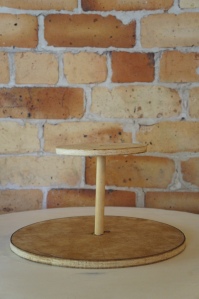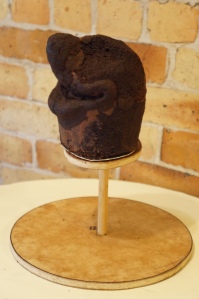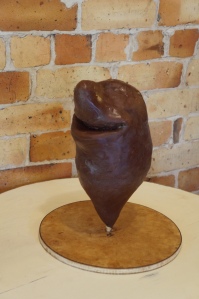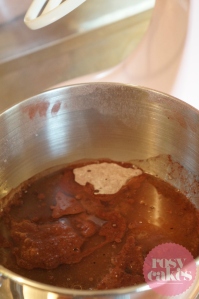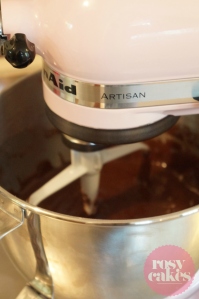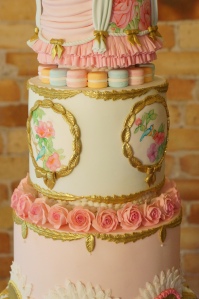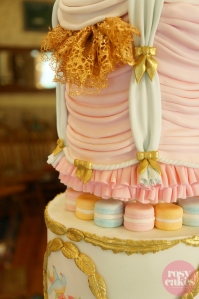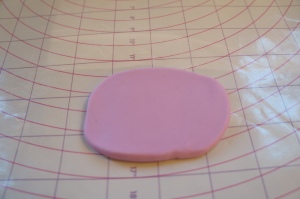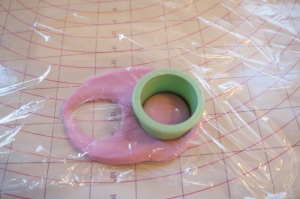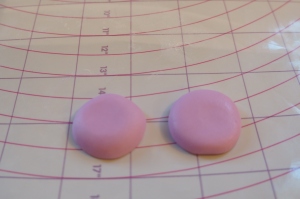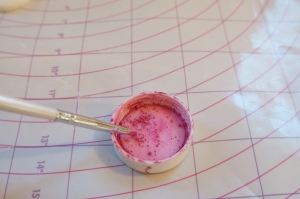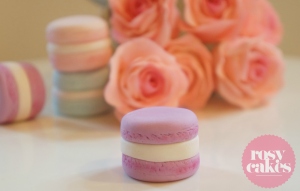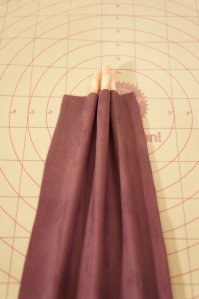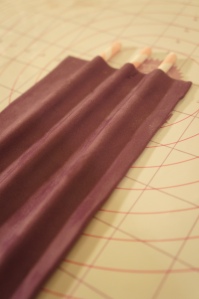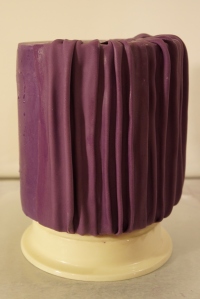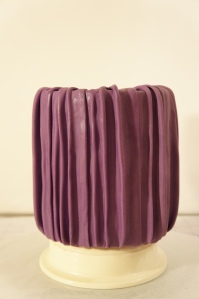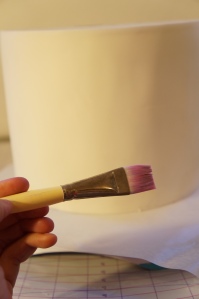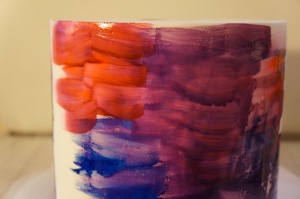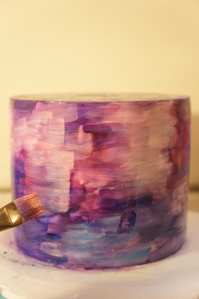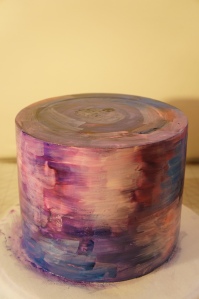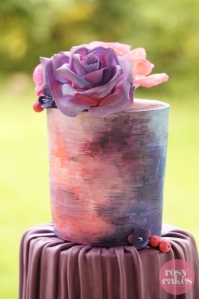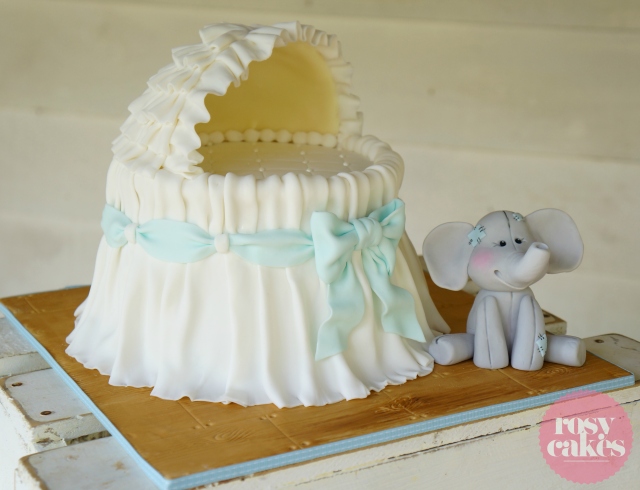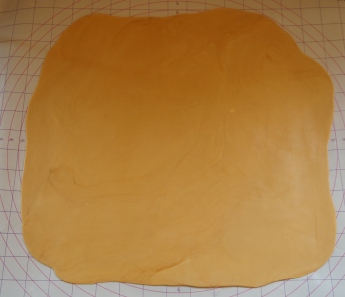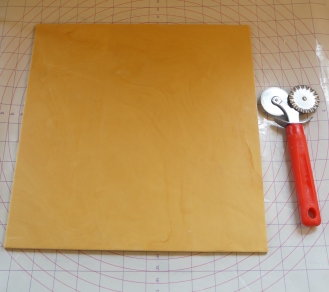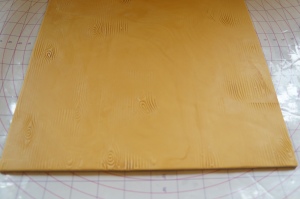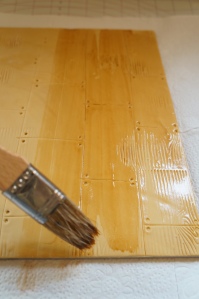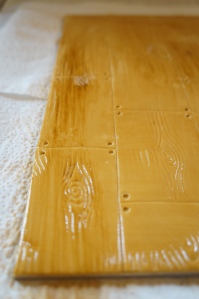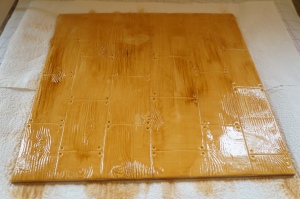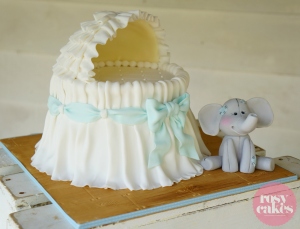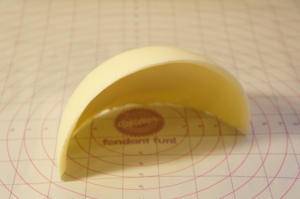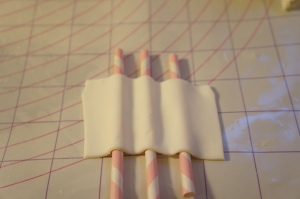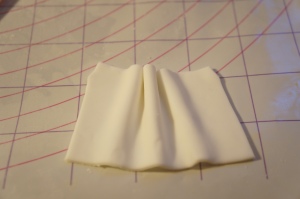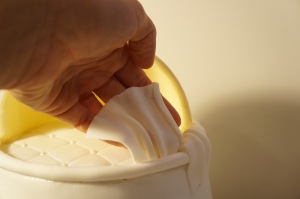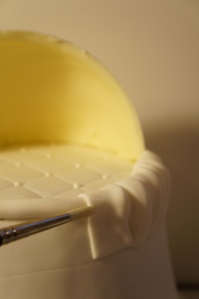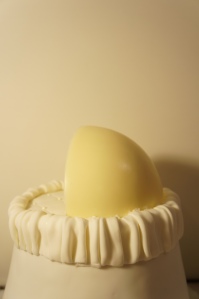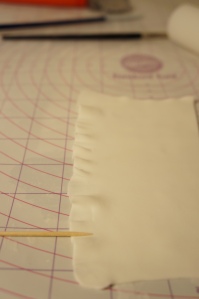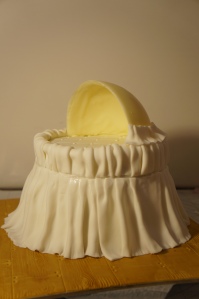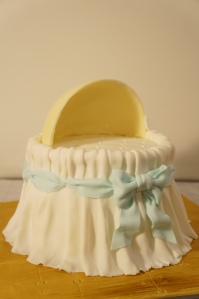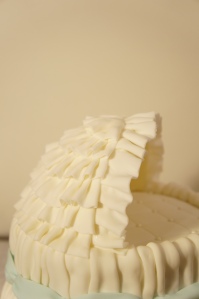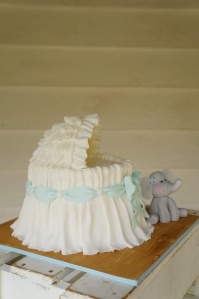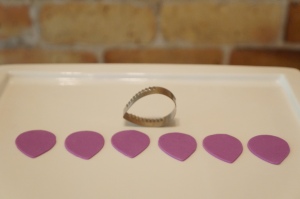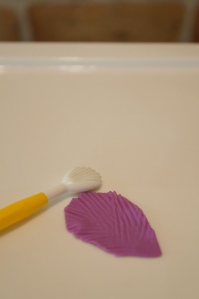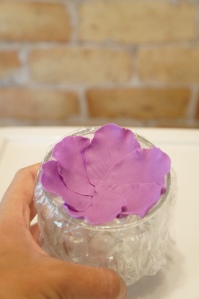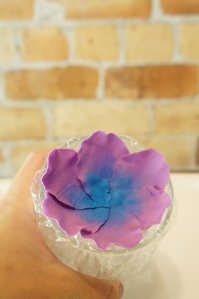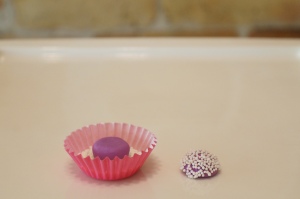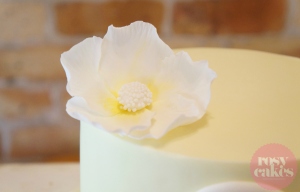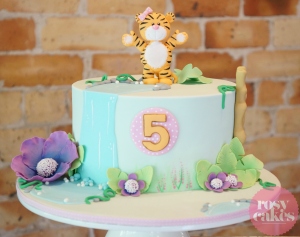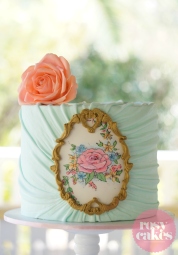Sharkie was the first structured carved cake that I have ever made. I managed to take some “process shots”, this is not in depth but gives a rough idea of how I achieved Sharkie. I learnt a lot and now I think I’m addicted to 3D cakes. Thanks to my friends Nina and Karin for all you help!
Yummy Scrummy Vegan (Egg & dairy free) Chocolate Cake
This recipe is an oldie but a goodie…I happen to have a best friend who is Vegan and she looooves this, it’s also perfect for all those “egg and dairy free” cake requests. It makes yummy cupcakes and is a beautiful cake for ganaching and covering in fondant too. There are many replacements you can use when it comes to Vegan baking but this is a very easy, simple cake and it’s guaranteed you will have all the ingredients in your pantry. The process is so simple, just mix it up in one bowl (Of course, in your fancy pants pink Artisan KitchenAid)
What you need:
3 C Flour
2 C White Sugar
2/3 C Cocoa (a good quality one if possible)
2 tsp Baking Soda
1 tsp Salt
2 Tbs White Vinegar
2 C Water
2/3 C Vegetable Oil
2 tsp Vanilla Essence
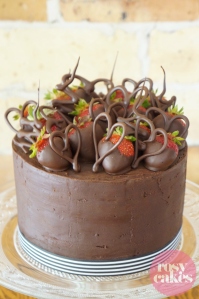
This cake tastes beautiful finished with a dark chocolate ganache and fresh strawberries….will leave the ganach lesson for another day…
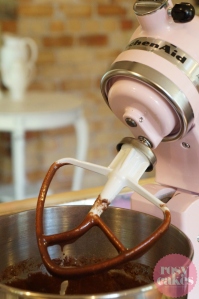
When the ingredients are combined, pour batter into a greased and lined 8 inch tin and bake for approx. 1 hour at 180 (or until a skewer comes out clean)

IMPORTANT! This cake is yummy when it’s fresh out of the oven, BUT if you can wait at least a day it is so worth it! It gets better over a couple of days. This recipe will make approx. 24 cupcakes, bake approx. 25 mins at 180 and they are also better the next day. There you go! A yummy Scrummy egg and dairy free chocolate cake.
How to make a gumpaste Macaron – tutorial
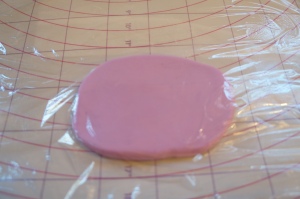
Cover with plastic wrap before cutting out the circle shapes, this gives a lovely smooth edge (I first saw this tip used by Lesley from the Royal Bakery https://www.facebook.com/theroyalbakery )

Now to create the “feet” of your macs, I used this icing tip (sorry not sure of its name) but it has little sharp points perfect for making the marks I want
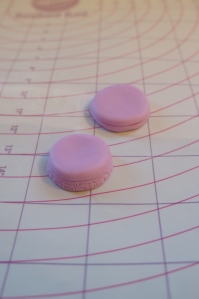
Make little marks the whole way around, now your little mac shell is starting to look pretty real. Do this to both shells.

Roll out some white gumpaste, using the same circle cutter cut out the Mac “filling”, don’t use the plastic wrap method for this as we want the edges to be sharp rather than smooth.

There we go, four cute little Macaron shells, patiently waiting for their filling… using a bit of edible glue, adhere two shells around the filling…note the filling may stick out a teeny bit from the shells, just use your fingers to shape the filling and the shells until they fit nice and flush, and now you have some sweet little Macs!
How to create a simple pleated tier – Tutorial
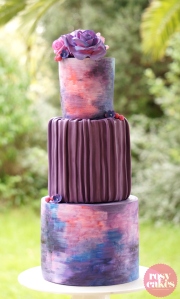
This is a short tutorial that gives some insight into how I make a simple pleated tier. By no means am I implying that this particular pleat design was created by me, I have seen it done many times but I have also been asked a lot of questions regarding how I achieved it, in particular the folding of the pleat underneath the cake. I hope the below helps you to achieve a pleat you are happy with.
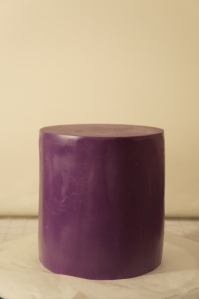
This particular pleated design is for a tier that is going to have another tier above it. The design does not cover the entire top of the cake. Prior to making the pleats I score or mark the size of the above tier into the top of the cake. This is the guide for how far on top of the cake the pleats are to sit. This cake has been covered in a thin fondant base, this is absolutely not necessary, on all of my pleated cakes I do a very thing fondant base in the same colour, this gives a really tidy finish when the thin pleated effect is adhered, I also find the pleats stick to the fondant a lot easier. In addition to that, if you have any gaps in your pleats (which does not apply so much to this particular design, then they wont show due the base layer being the same colour)

The key to creating the pleats that fold under the cake is to elevate the cake on a very sturdy bowl. The cake remains there during the whole process and the pleats are adhered to the cake and folded under the cake base. It is important that once the pleats are completed to carefully place the cake onto a cake board (or if that is not ready yet just place it onto a flat surface that is lined with baking paper. This will ensure the pleats at the bottom dry in the perfect way rather than drying while the cake is elevated and then being placed onto a flat surface, this may cause the bottom pleats to crush or break. In addition, ensure pressure is applied when placing your completed cake onto a cake board or lower tier and use a level to make sure the cake is sitting flush, so that the pleats don’t cause the cake to be lop-sided.

Brush entire cake with edible glue, shortening or water. If it dries while your working you may need to reapply.
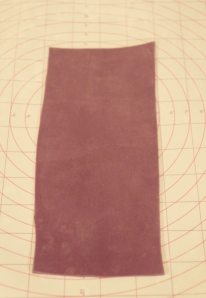
Roll out a very thing piece of fondant. Measure the height of your cake and add a few cm’s to the length. Enough to fold over the top of the cake and enough for a wee bit to fold underneath.
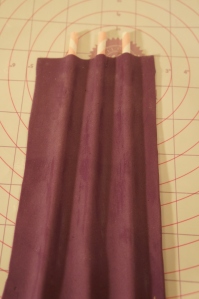
Lay fondant over 3 paper straws (Dowels or skewers also work). Use your fingers to smooth over the straws and create grooves in between the straws.

All of the following pleats are created in the same fashion as the first one. The only difference is that they a small “hem” is created on the edge that will over lap the prior pleat.
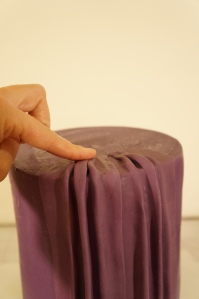
Adhere the next pleat. See how I am applying pressure to the top of the pleat, almost squishing it down where it meets the guideline.
Abstract Painted Cake – Creative Process
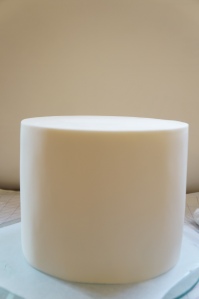
Start with a blank canvas, a plain fondant covered cake. Allow a decent drying time so that your fondant is relatively hard, I let this dry for 24 hours. You will also need a good amount of time to allow the paint to dry once it is completed, this will depend on different circumstances such as your climate and how thick you have painted. This cake was left for another 24 hours near a dehumidifier and was perfectly dry by the next day. I had applied quite a generous layer of paint to the cake.
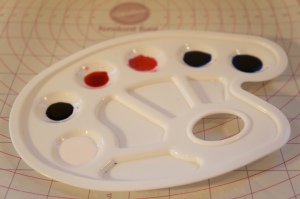
Here are the colours I chose for my design. A mixture of gel colours and petal dusts that I have watered down with Vodka.
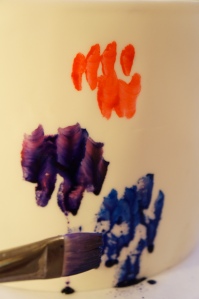
I started by dabbing different colours onto different sections of the cake, I did this just to get an idea of what they would look like and to ensure I liked the colours I was working with. You could skip this step, or you could do this on a separate piece of fondant if you don’t want to do it straight onto your cake. Have a glass of water on hand to rinse your brush in between colours, and a paper towel to wipe your bush on. Otherwise you could use a different brush for each colour, personally I love how some of the colours mix a bit on the one brush.
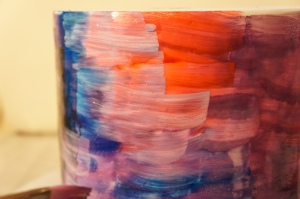
This is where I started painting on a lighter shade, using my brush and white gel (mixed with vodka) I painted over random parts where I thought it would look good to have a lighter section.
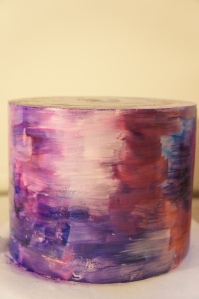
Once the entire side was covered in colour I then just rotated the cake, painting lighter patches here and there….
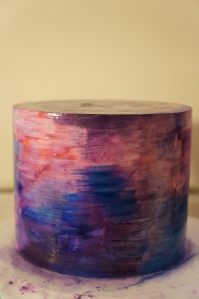
And…went back and added some more blue… I could have kept going but had to stop myself before the cake got too wet and the moisture started to melt the fondant AND before I painted too much that it all become one brown blur. By this stage I was really happy with how it was looking, so I put it aside to dry. The same process was used to create the smaller top tier of my cake deign.
Wood Grain Cake Board Tutorial

Colour enough fondant to cover your cake board. I wanted a light shade of wood so I used yellow with just little bit of brown. I also did not completey work all the colour through, only partially so there are natural “wood-like” streaks in the fondant.
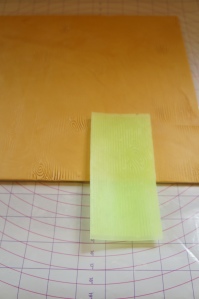
I have a wee wooden impression mat, I used it make random impressions all over the fondant. You may have a large one or if you don’t have one just use a Dresdon tool (or a knife or skewer) to make your own “wood-like” markings and impressions.
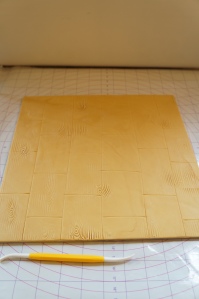
Mark the wooden slots…or slats? …panels? you know what I mean, can you tell I have never drawn a straight line in my life! I guess you could use a ruler if you are really clever
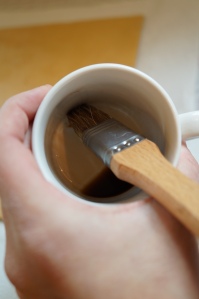
Mix brown gel colour with a wee bit of vodka to make a stain, using a pastry brush to paint the stain onto the fondant.

Using a bit of darker brown gel and a smaller brush, do some spot painting to create darker “woody” effects
Bassinet Cake Tutorial

This was th second time I have made a Bassinet cake, I was really excited to try it again using more pleats and managed to take pics of the process to create this simple tutorial. I have also done a separate tutorial on how to make the Wood grain board. (Sorry pics were taken at night so not the best lighting!)

Start off by creating the Bassinet hood. This can be done a few ways, last time I made it out of gum paste, but this time I decided to make it out of solid chocolate, its stronger and yummier too! Using a bowl or a ball pan, coat a very thick layer of melted chocolate to half of the pan, place in fridge to set. Its important to take note of the size of the bowl or pan to ensure the hood is going to sit within the size of your actual cake when its placed on top. Make sure the centre line is very straight, this is the part that sits on the cake and you want it to be flush. I used a knife when it was semi-set.

For the cake, I carved an 8 inch cake so that it measured approx 6 inches at the top. Then covered in ganache.

The cake was then covered in fondant. (This is a base to the fabric pleats so it does not need to be perfect)
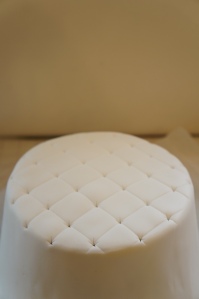
A quilted pattern was then applied to the top of the cake. (This is going to look like a blanket that has been neatly tucked in)
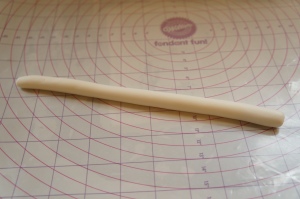
Roll out a fat fondant “tube”, long enough to fit around the top of the cake (This is going to be covered in fabric pleats and will add height around the top of the bassinet)
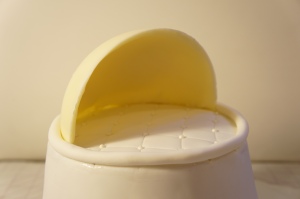
Adhere the tube to the top of the cake. Using some left over melted chocolate adhere the bassinet hood o the top of the cake (within the tube)

Now to create some pleats. These will be added right around the entire top part of the cake. I scored a mark about 1.5 inches down the cake to use as a guideline for where these pleats would end. Then I rolled out some very thin fondant, approx inches 2 high and 3 inches wide. This will vary depending on your design and cake size.

Add a teeny bit of edible glue or water to the inside seam of the tube. I have already added the first pleat in this image.

Pull pleat over tube and adhere the bottom of the pleat to the line that has been scored as a guideline.
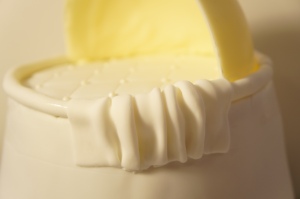
The pleats should be starting to look like this, remember no two pleats will ever be the same, so don’t stress too much about them, once you stand back and look at them all together they will have a beautiful fabric effect. (Remember I had already added one pleat to this prior to the pic)
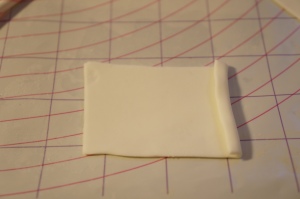
All of the following pleats must have a little “hem”, this part over laps the prior pleats and gives the effect of one continuous piece of fabric.
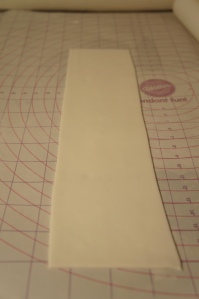
Now for the bottom fabric pleats, this part can be done is long sections. but its important to measure out the correct height.
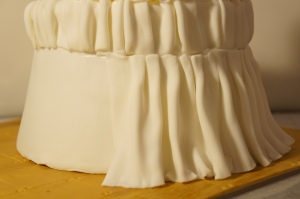
Start adding the pleats to the bottom section of the bassinet. I used my straws to create the pleats (as shown above)
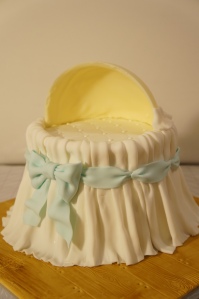
I created the ribbon swags by cutting lengths of very thin fondant and then pinching the ends together to give an effect of being threaded into the fabric. You will see in the final pics I have also added little white strips of fondant where the ribbon swags join.
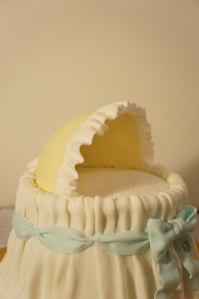
To create the bassinet hood pleats, I cut long strips of fondant, and used a tooth pic to soften and ruffle the edges, then I applied edible glue to the chocolate base and gently applied the first ruffle to the front of the bassinet, I wanted the pleat to over hang the chocolate base as shown.
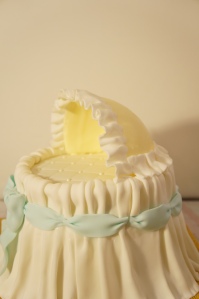
Moving on to the bottom of the hood, start adding the remaining bassinet hood ruffles, they will face the opposite direction, so that they are hanging down (as shown)
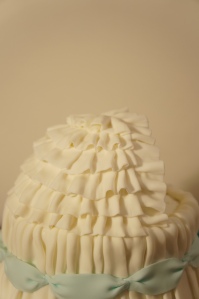
Work all the way up to the top of the bassinet hood, ensuring each layer slightly over laps the prior layer and that the chocolate base is not exposed.
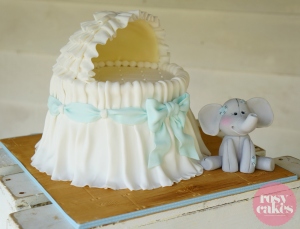
And the finished cake with my extra little touches (I added a pearl border inside the hood for a tidier finish). You can also see my little white strips I mentioned above that cover the blue ribbon joins, and of course my cute little elephant! The cake is sitting a wood grain board which I have also done a tutorial for.
Easy Fantasy Flower Tutorial
This is a really quick way of adding impact to your next cake design, a fun Fantasy Flower tutorial
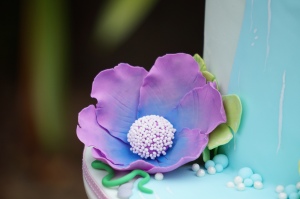
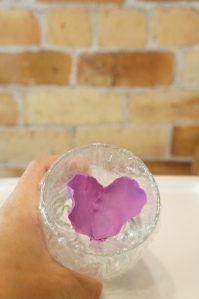
Cover a cup or small bowl with plastic wrap or foil. Using edible glue adhere the petals to each other, slightly overlapping.
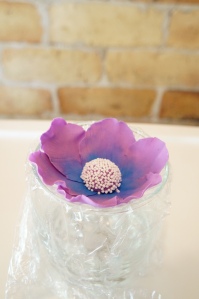
Glue the centre on and allow to dry over night, you can also place it directly onto your cake and support with paper towels or plastic wrap and let it dry. There you go! An Easy Peasy Flower! That looks gorgeous!

